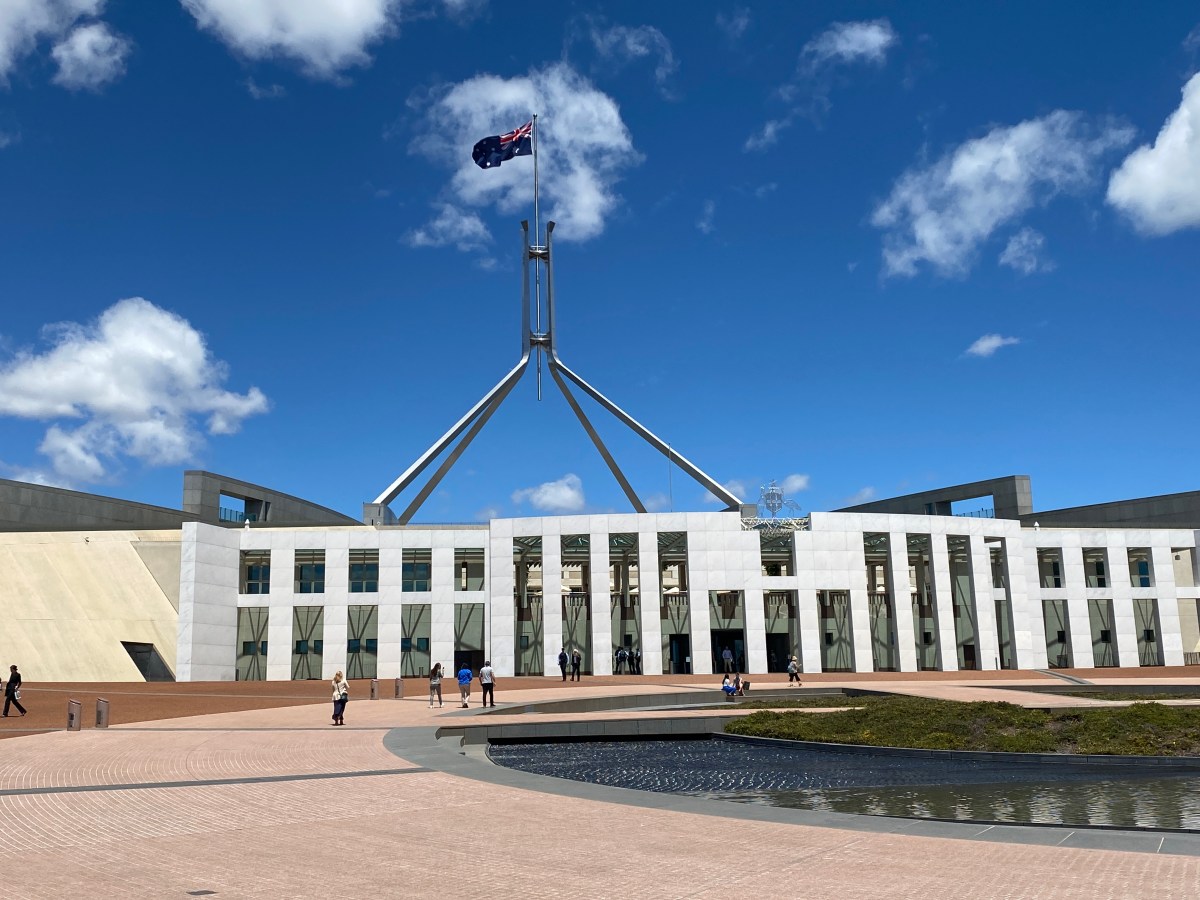While opportunities like the National Cultural Policy have allowed the sector to voice its needs and visions for change to politicians and government, they lack the personal contact that is critical to taking the words off the page and putting them in the real world.
That is why the Creative Regions National Summit, presented biennially at Parliament House by Regional Arts Australia (RAA), is a vital think tank for action – and communication.
ArtsHub attended the Summit last week (26 November 2022) along with representatives of peak organisations and arts companies from all states, and regional and remote locations. Not in attendance was Federal Minister for the Arts Tony Burke, who was unable to cross the building and deliver his scheduled paper, ‘Where to from here?’
It is curious stack of priorities given that a focus of this Summit was geared towards arming the arts and culture sector to better communicate with our politicians, with the Summit also being the moment RAA launched its Regional Strategic Framework.
RAA described the framework as ‘[unlocking] the cultural ambition and potential of regional Australia by integrating industries such as tourism, hospitality, manufacturing, agricultural and technology with the creative sector and supporting the distinctive assets of a region and their communities’.
Government has encouraged this cross-industry collaboration for the arts, where topics like mental health and wellness, tourism spend and stays, and regional liveability for an expanded jobs market, are all hinged on the role the arts play as a ‘future building’ prospect for regional Australia.
While Burke could not make it, he sent Special Envoy for the Arts (a new position appointed under the Albanese Government), Susan Templeman MP in his place. As she delivered what felt like a media release-style paper, loaded up with recent funding data and announcements (that everyone in the room already knew), the real opportunity felt lost.
It sat in direct contrast to the opening paper for the Summit, delivered by former Independent MP for Indi (Vic), Cathy McGowan, who said: ‘You don’t have to be scared of politicians, because they love you. There’s not a member of this Parliament that doesn’t love their artists, regardless of their politics. And if you invite them to come and be a guest speaker, there’s almost not a politician alive who wouldn’t say yes to that.’
McGowan did admit that when Parliament sits, it is a challenge to engage, even for politicians like herself. She recalled an occasion when she was called upon to harangue members to attend an art event ‘on their turf’ – a busload of regional young people shipped in to perform at Old Parliament House – and still only one politician committed. Regardless, an impact was made.
Shadow Minister for the Arts, Paul Fletcher did find time to address the Summit, though he did not take questions.
He echoed McGowan’s call for the sector to be more proactive in reaching out. He advised those in the industry to not just contact their local member, or the state and federal arts ministers, but also opposition ministers, health ministers, education ministers and so on, to arm them with the sector’s narrative to use in Parliament.
‘As Minister, the advice I think I gave one of these forums before was, by all means go to the arts minister, but also make sure you see as many other MPs as possible… when lots of other entities are standing up [in Parliament] saying, ‘I want money for the arts in my community’, that has a lot of resonance,’ said Fletcher.
[It] seems to me the question becomes, how does having a vigorous and lively local art scene add to the pool of factors in bringing people into our area?
Shadow Minister for the Arts, Paul Fletcher
It was interesting to note that in line with this zeitgeist of cross-industry collaboration fuelling this Summit, Kristy McBain, the Minister for Regional Development, Territories and Local Government, also attended briefly as an audience member.
Fletcher continued: ‘It seems to me that, in terms of the priorities that you’re all thinking about right now, there are a few things that makes sense for you to leverage – one is the shift that we saw in COVID to people moving from metro areas to regional areas. That means regional centres are growing larger and have [a] growing appetite for activities.
‘[It] seems to me the question becomes, how does having a vigorous and lively local art scene add to the pool of factors in bringing people into our area?’
Fletcher spoke of the ‘pull factor [the Arts have] for the kind of people that councils and economic development offices want to attract…. [how] it’s part of the lifestyle factors attracting the kind of people who are going to be contributing more broadly to our region’s economy.’
While Fletcher spoke briefly, he also encouraged the sector to think – and speak – like politicians.
‘The final observation I make is, spend a bit of time talking about the economic importance of the arts… The frank reality is that that’s the language of this building – jobs, economic development, economic activity. So the more you’re able to phrase your propositions as you interface with politicians from all sides, and bureaucrats and officials, in terms of here’s the inherent value of what we’re doing, but also the number of jobs, how it’s going to attract inbound tourism to come and visit our particular regional centre – those are all messages that will have traction with politicians,’ he said.
Speaking to politicians … but are they really present?
In her speech, Templeman said that she was delighted to see the Regional Strategic Framework implemented, and to see how cleverly it integrates arts and culture with industries that are distinctive to local areas, and aims to embed strong educational skills and career pathways for creative sector workers and communities in regional Australia.
‘I got to travel around the country and learned the messages were surprisingly consistent,’ she said, while noting regional festivals and arts events are struggling to secure the staff to run them in a post-pandemic environment. ‘These concerns are among the top things that the arts roundtables voiced,’ said Templeman.
‘We know that the gig economy, and relatively low wages, mean that many talented artists and performers cannot make ends meet on their creative endeavours. That isn’t good enough.’
But then she followed with the statement that, ‘The Australian Government provides around $3.7 million a year through the Regional Arts Fund to support hundreds of arts projects, because in our regions art projects can run on the smell of an oily rag – a small bit of money goes a long way.’
Templeman went on to introduce the Australian Government’s new Precincts and Partnerships Program, which will support community clusters such as shires, districts or regions.
Is that oily rag just being wrung tighter, with the arts and culture sector having to reframe and regear itself again to appeal to funding frameworks?
‘The program will provide a national approach to projects that will be shaped around shared needs, including arts and culture. These initiatives will support interconnection and integration across art forms, across communities and across landscapes,’ said Templeman, adding that the Precincts and Partnerships Program will also be the mechanism for regions to move towards net zero, as well as encourage jobs and skills creation.
ArtsHub will be watching this space carefully when the new program is unveiled.
The Creative Regions National Summit was held on 26 November at Parliament House in Canberra.





